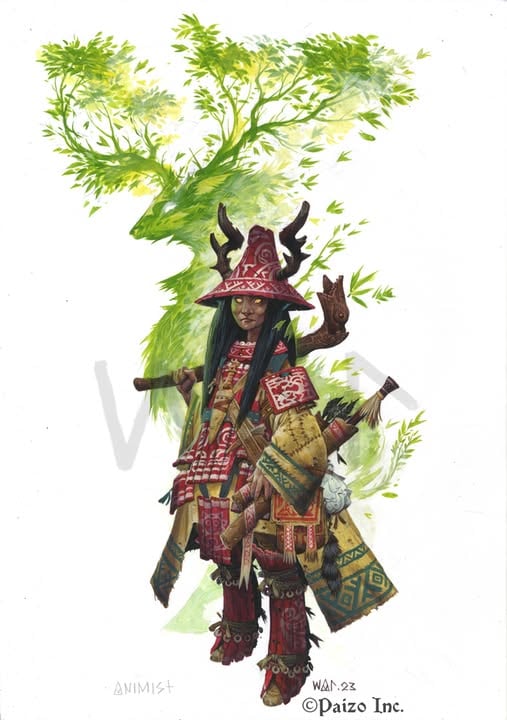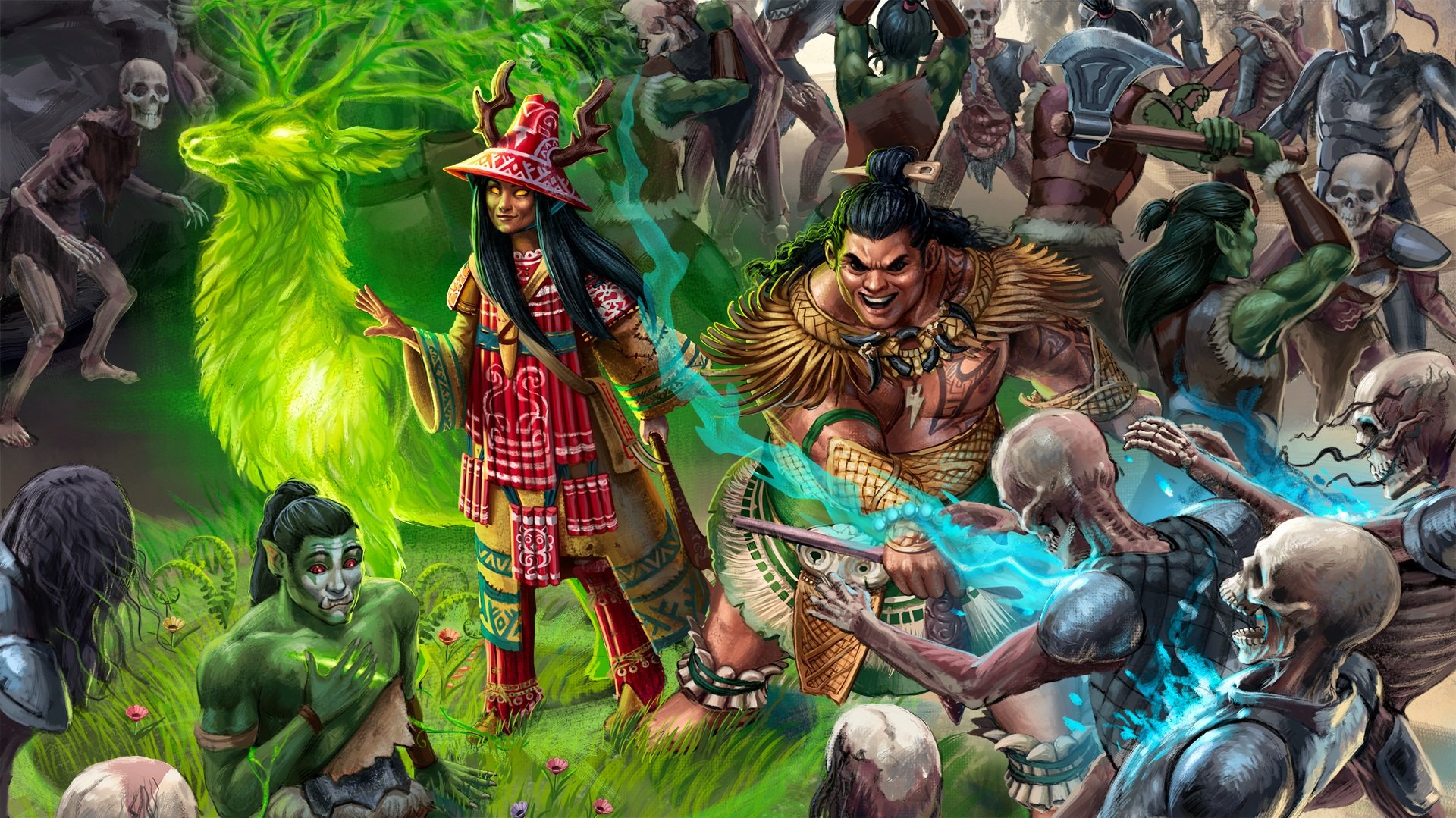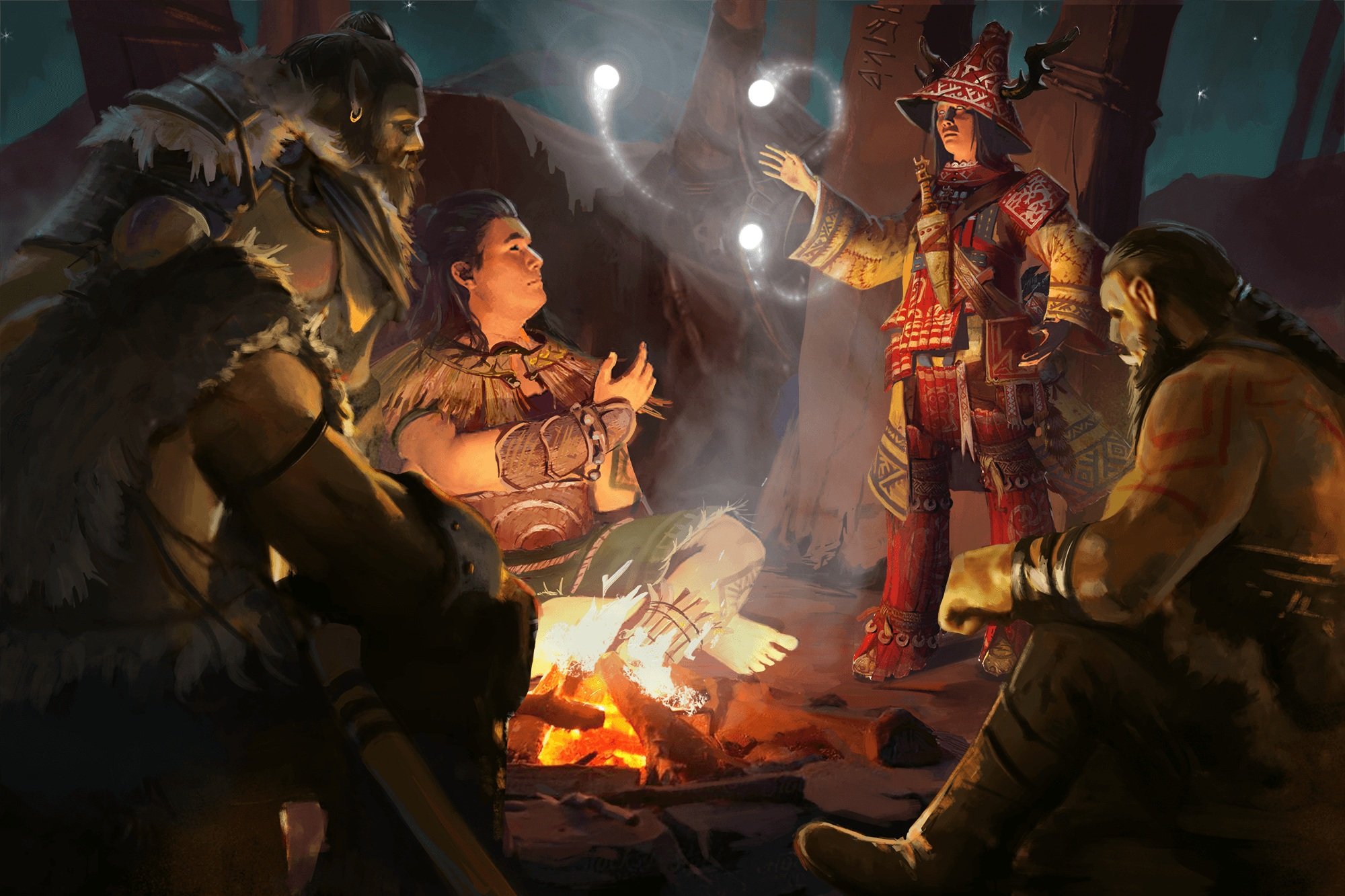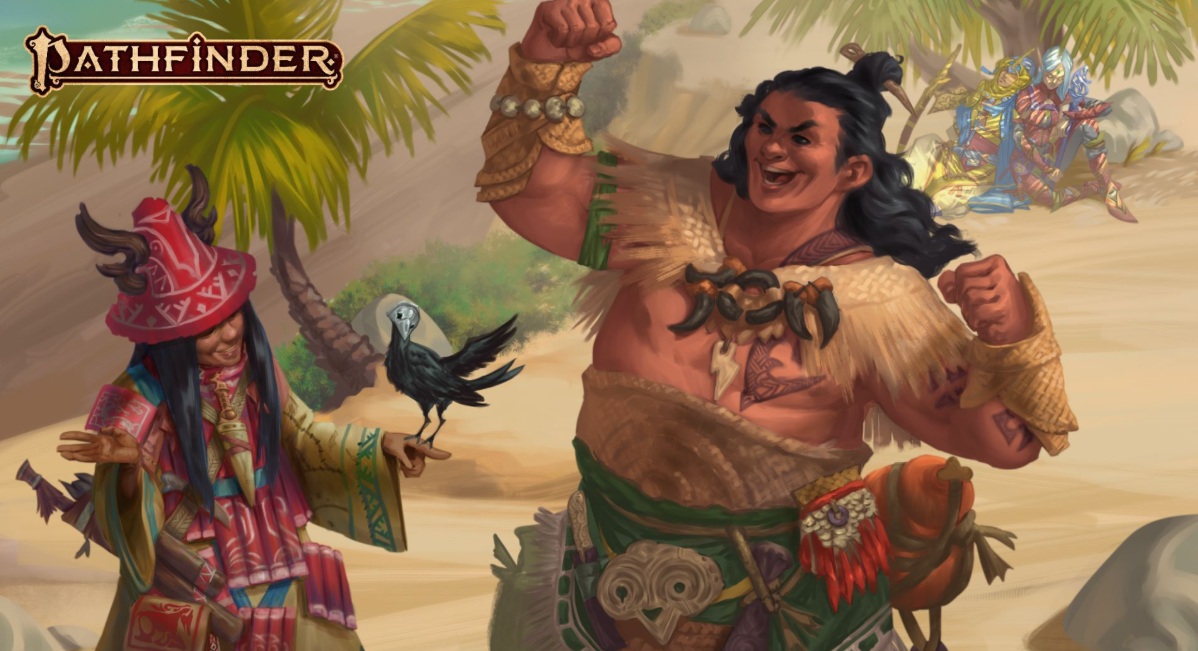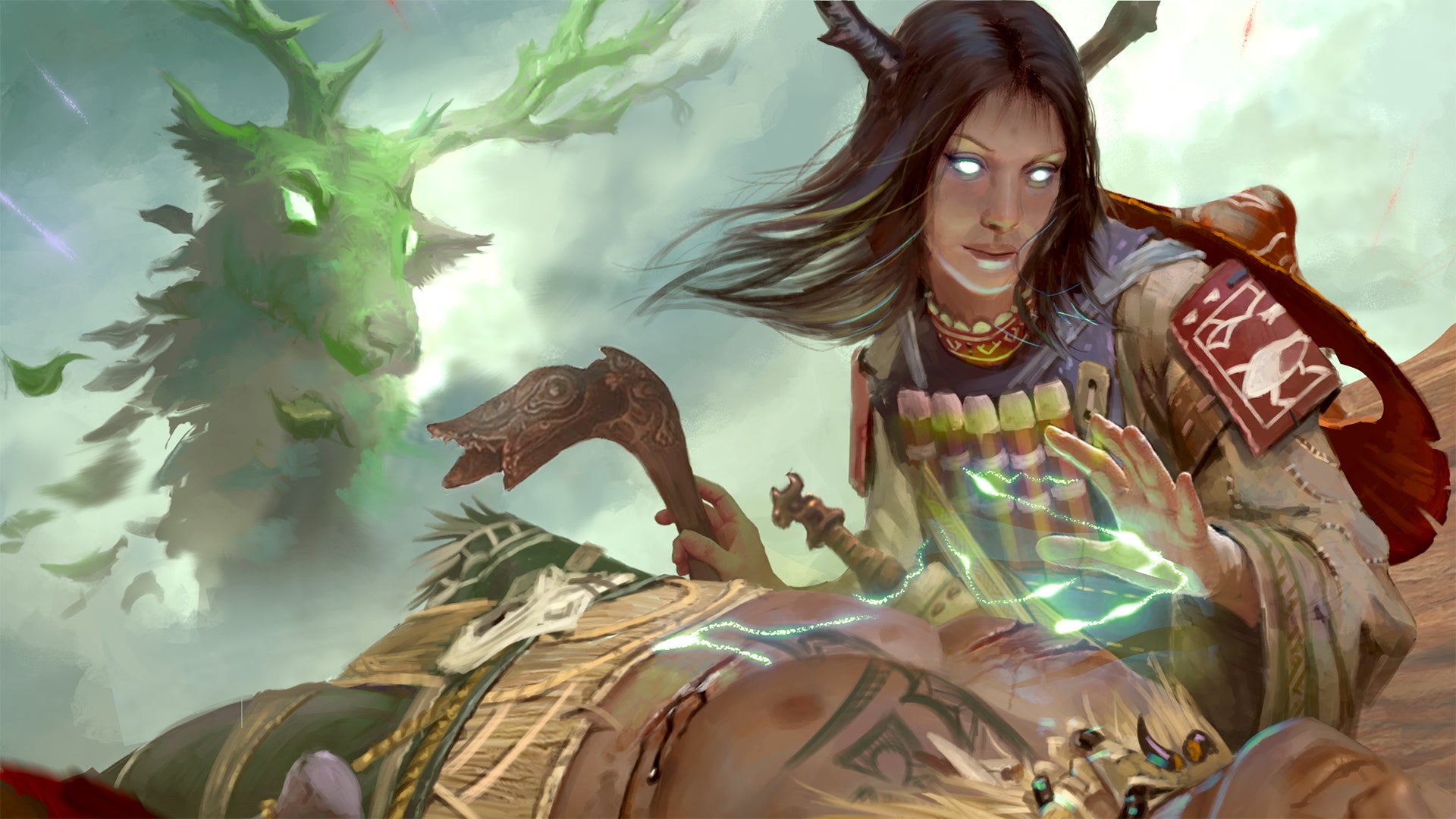The Pathfinder animist is making new friends in every town they visit. But the friends are spirits who sometimes lend the animist their power.
Coming from the War of Immortals rulebook, the Animist is a bridge and interpreter between the seen and the unseen, acting as a voice that connects the spiritual and mortal worlds. Their bond with spirits allows magic and knowledge to flow through them. But will this come in the form of healing, destructive power, or something in between? That’s up to you. Animist’s consider their power part of a sacred trust and see themselves as a chosen champion of the two worlds. They may prefer to advocate for mortals, represent the spirits’ interests, or toe the line between the two. But they always bridge the cap between the realms.
Jump to…
The Pathfinder Animist Basics
Being able to communicate with both the natural and spiritual worlds and how to balance the two, Animists are a Wisdom-heavy class and take a boost to the attribute right at character creation. They begin their adventure with expert-level training in their Will Saving throw. But they also begin with training in Fortitude, Reflex, Simple Weapons, Unarmed Attacks, Light Armor, Medium Armor, and Unarmored Defense. Finally, the Pathfinder Animist will start with training in the Religion skill as well as either Nature or Occultism, and another of additional skills equal to their intelligence modifier plus two.
During combat scenarios, Animists will channel the power of their spiritual entities to cast spells and manipulate the battlefield to their advantage. They will use a mixture of divine magic, spells, and apparitions help them to both attack their enemies and help their allies.
Between battles, Pathfinder Animists have a tendency to be more observant and open members of the party. They are always watching and listening for the input and guidance of the spirits. With patience and attention to detail, they watch for clues and threats that the rest of their group may not have noticed, and at times seem to have a natural and ancient wisdom. But they may also act a little strange by most standards. Animists will often find comfort in places that make them feel close to otherworldly entities. Places like primeval wilderness or grave sites.
Apparition Attunement
The Pathfinder Animist’s gifts allow them to act as a conduit for otherworldly entities. Through them, these entities can commune and interact with the physical world. Collectively, these entities are known as apparitions.
Apparitions can vary dramatically in levels of connection to the physical world or level of malice. And Animists can choose to work with many different apparitions and connect with different apparitions in each town, or to work with just a few and create a deep connection with them.
Each day, during their daily preparations, an Animist will choose two apparitions to attune to. They will grant their knowledge in the form of Lore skills as well as a collection of additional spells to use during apparition spellcasting and vessel spells.
Animistic Practices
At first level, Pathfinder Animists will choose their practice. This practice influences how their power grows and develops, providing additional invocations at levels one, nine, and seventeen.
Liturgist: Animists who choose this practice will draw forth their apparitions with the power of song and dance. These performances can be their own creation, or specific to their culture or religion, but they will connect the spiritual to the physical.
Medium: This practice is chosen by Animists who are especially skilled at acting as conduits for spiritual energy. They will tend to work with a wider array of apparitions, but do not often bond with any one in particular.
Seer: These Animists are especially sensitive to the presence and influence of spirits and the undead. They can detect lingering spirits, but this often offers some amount of defense against them.
Shaman: Animists who choose this practice form close bonds with apparitions that want to take material form in and directly affect the physical world. Their apparitions can sometimes straddle the line between physical and spiritual worlds.
Multiclassing a Pathfinder Animist
An adventurer who manages to establish a relationship with a spiritual entity may unlock the ability to use animistic magic. For spellcasting classes, this will increase their spell knowledge as well as their understanding of the worlds around them. And for more melee-focused classes, the Animist is an excellent opportunity to add some spellcasting to their repertoire.
Adventurers who multiclass as Animists gain access to the feats Animist Dedication, Basic, Expert, and Master Animist Spellcasting, Spiritual Awakening, Animist’s Power, and Apparition Magic.
How to Play a Pathfinder Animist
Animists are one of the most unique player classes out there. And while all character classes leave a lot of room for customization in your character build, the Animist lets you change things a little bit every day. Many classes let you update your prepared spells on a regular basis, and in practice the Animist’s apparitions aren’t too much different from that. But the apparitions will also come with skills, knowledge, lore, and whatever flavor and exposition your GM may want to add to the game through them.
Keeping track of your spells is another thing to keep in mind about the Animist—though this is far from a consideration specific to them. In addition to their regular spell slots and cantrips, apparitions will give the Pathfinder Animist access to apparition spellcasting as well as vessel spells. Each are a little different, have their own rules, and must be kept track of separately.
Happy adventuring!
Subscribe to our newsletter!
Get Tabletop, RPG & Pop Culture news delivered directly to your inbox.
Don’t Miss:
Read more at this site

